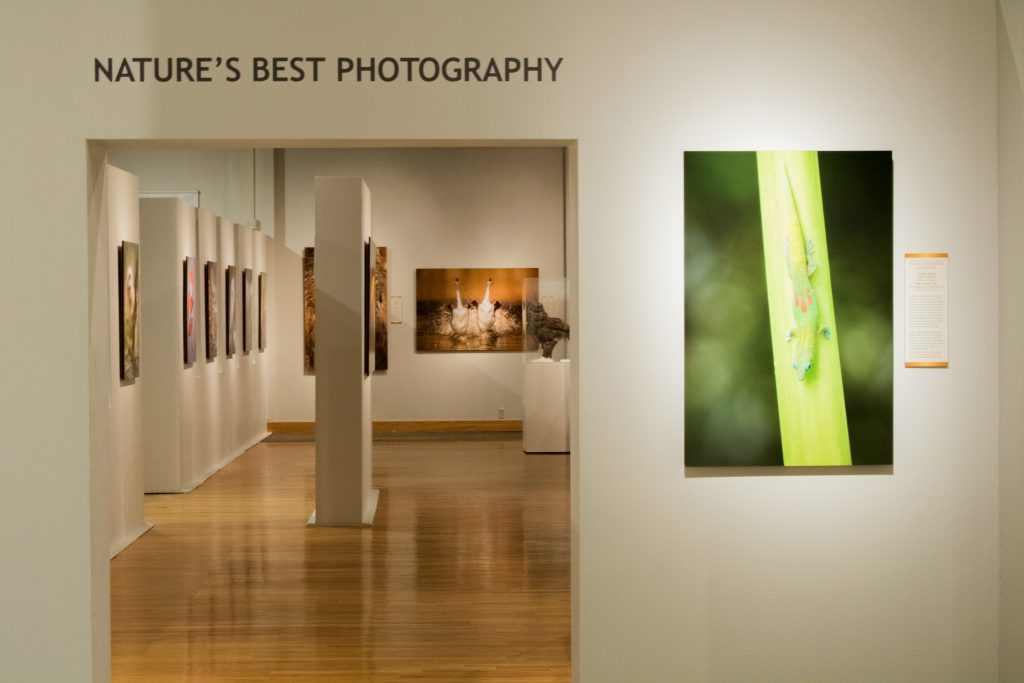On Friday, March 1, the third annual “Nature’s Best Photography” exhibition opened to the public at the Roberson Museum and Science Center on Front Street. This is the last year that the exhibition, which is exclusively run at the Roberson and the Smithsonian National Museum of Natural History, will feature new photographs in the collection. The goal of Nature’s Best is to celebrate and showcase the beauty of nature through the art of photography while also encouraging the greater public to venture outdoors.
In addition to the display, the Windland Smith Rice International Awards competition is done in conjunction to show off the best and the brightest displays participating photographers have to offer. The competition allows photographers of all ages to go out into nature and display their aptitude in the world of printed portraits. Contestants have to submit up to 25 of their best captured moments while out in the wild, which can include animals, the environments they inhabit or both. The photographs are judged based on quality and the effort put into capturing special occurrences in nature. Winners get featured on social media platforms and web galleries and have their works shown at the 2019 Windland Awards.
Some of the photographs displayed included surreal snapshots that showcase the destructive power nature possesses, with examples that include volcanic lava pouring into the ocean off Kalapana Coast, Hawaii and a lightning storm taking place above an active volcano in Colima, Mexico.
According to Natalie Shoemaker, marketing and events coordinator at the Roberson, these occurrences only happen once in a lifetime and therefore must be documented for future observers.
“It’s very important because it takes these moments in life — it captures these spectacular moments in nature,” Shoemaker said. “I’d like to think these moments exist and will continue to occur. We want these moments to continue to exist so future generations will continue to appreciate nature for what it is.”
Aside from photographs, there were also life-like taxidermy showcases of cougars, puffins, owls and more on display. The pieces and pictures contain almost no human presence, as natural events and animals claim the scene for themselves. In the museum, there are about 5,000 specimens of taxidermy birds and mammals, some local, some exotic, that are put on display. Most died in captivity in zoos and nature exhibitions in Vestal and other New York zoos. Lee Loomis, the taxidermist responsible for these dioramas, was born and raised in Broome County and has been doing taxidermy since the 1960s.
According to Shoemaker, Binghamton residents don’t need to travel the world to appreciate nature’s grandeur, as there are local examples of where individuals can observe the outdoors.
“The nature preserve at [Binghamton] University is a great example to sustain and connect individuals with the natural splendor,” Shoemaker said.
George Cummings, ‘07, said he appreciates the photographs because of the attention to detail each photographer puts into an image.
“We’re letting our minds go free by taking in the visual artistry because there’s a lot involved in just capturing these moments,” Cummings said. “It’s the patience, commitment, and passion put into capturing these pictures that makes them so valuable.”
For Mary Beth, a resident of both Scranton, Pennsylvania and Windsor, New York, the variety of photographs is what makes the exhibition so interesting.
“These photographs are absolutely beautiful. It feels like I’m being pulled in,” Beth said. “[It’s] very enticing for a first-time visit.”
The exhibition will continue at the museum from now until June at an admission price of $8 for adults, $6 for students, seniors and military veterans, $4 for museum membership subscribers, $3 for members of the Binghamton Zoo and the Discovery Center and free for children 4 and under.



